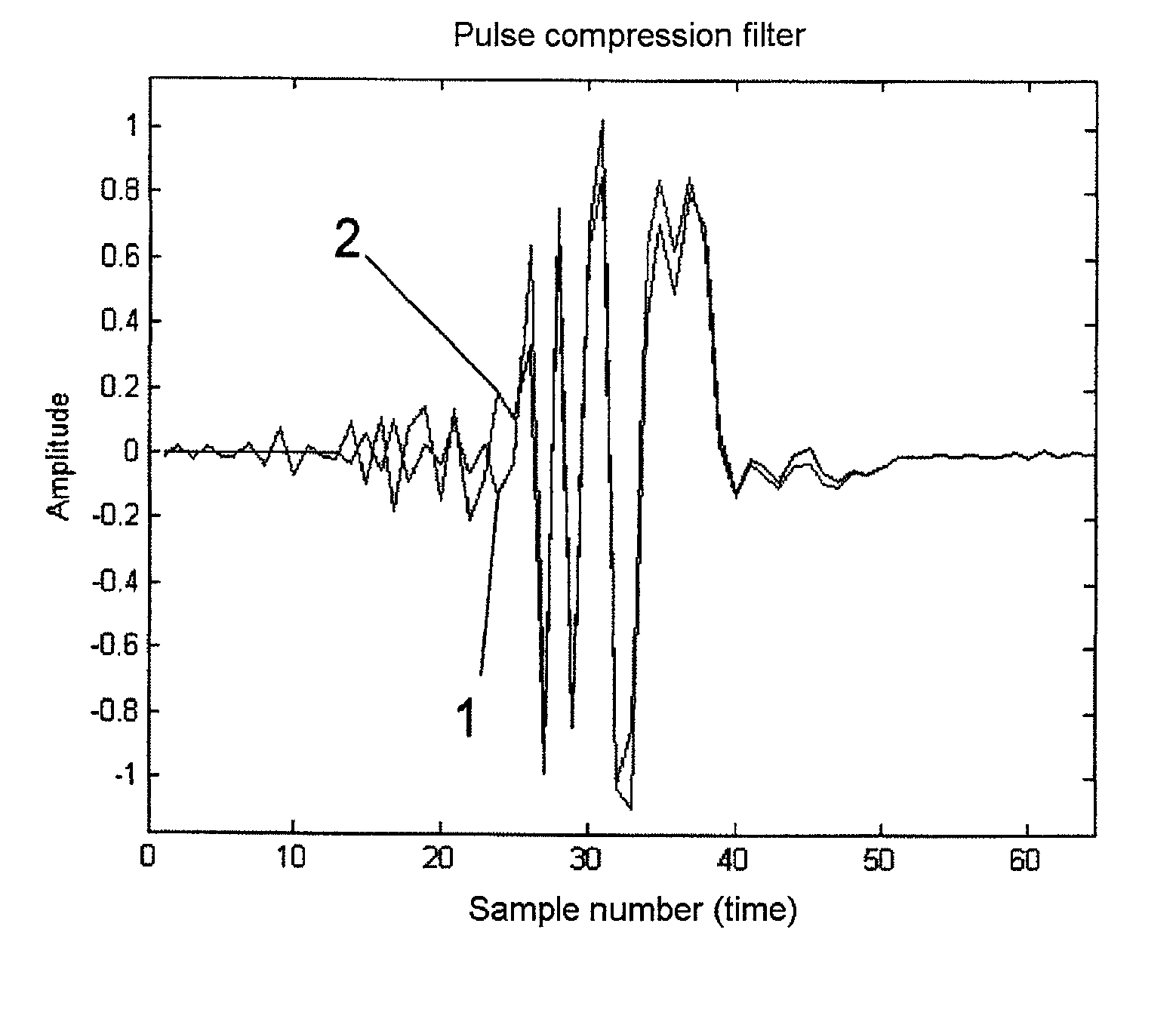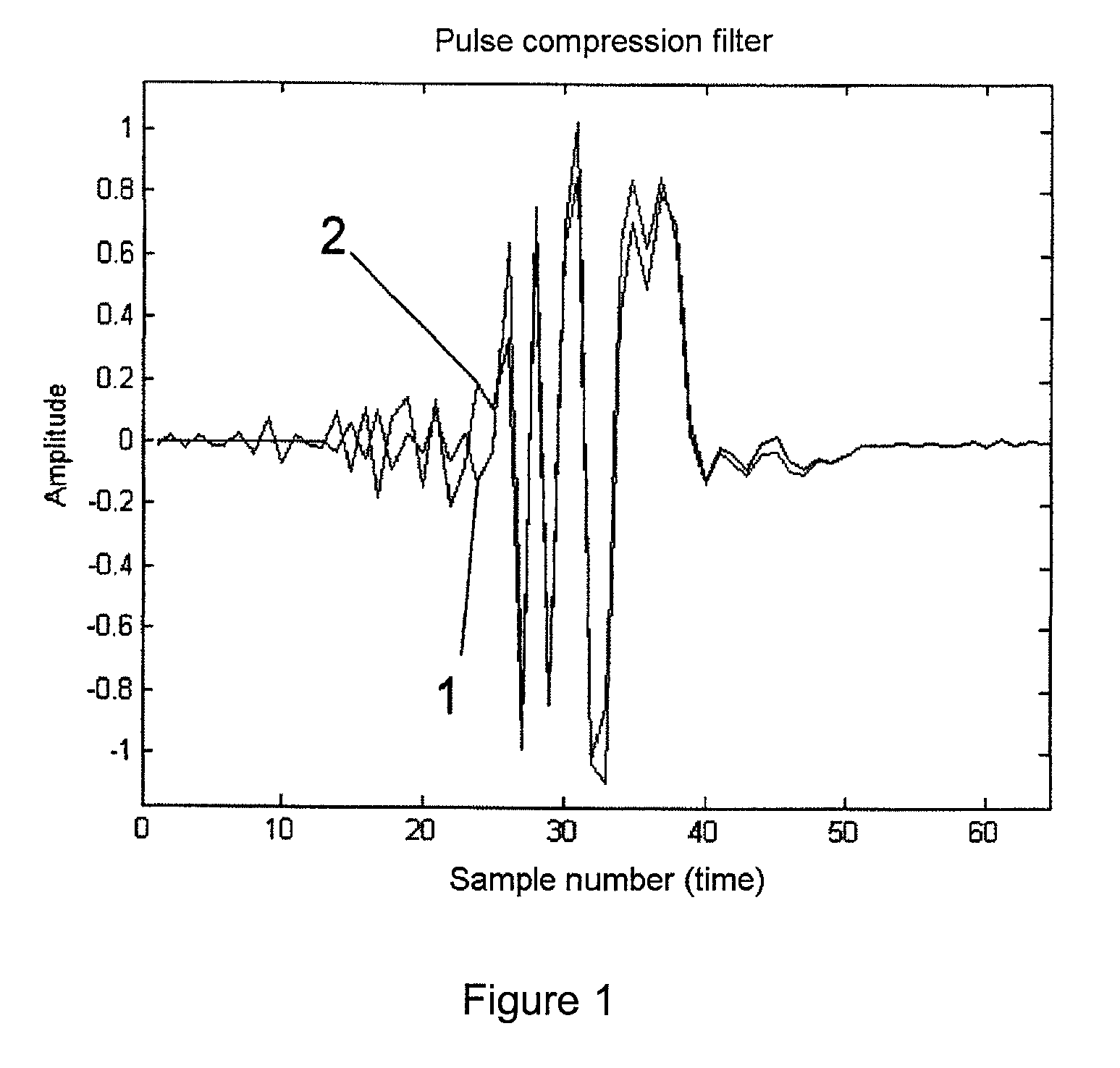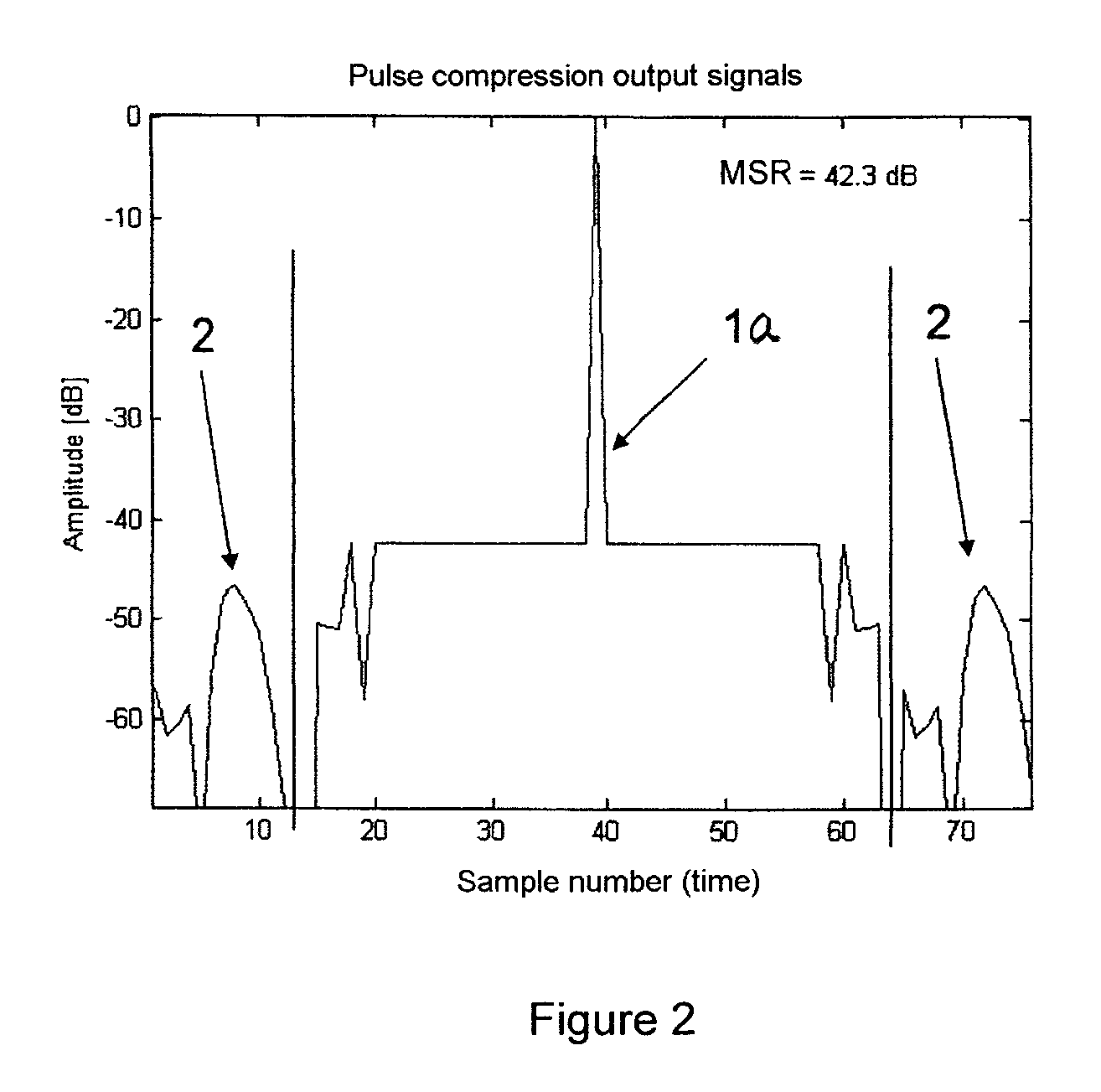Adaptive calculation of pulse compression filter coefficients for a radar signal
a radar signal and filter coefficient technology, applied in the field of pulse compression filter coefficient adaptation calculation of pulse compression filter coefficient for received signals, can solve the problems of not being able to automatically implement the process, not being able to react to signal changes (and therefore signal deficiencies), and significantly noticeable differences in the pc image, so as to achieve high side-lobe separation
- Summary
- Abstract
- Description
- Claims
- Application Information
AI Technical Summary
Benefits of technology
Problems solved by technology
Method used
Image
Examples
Embodiment Construction
[0026]The process according to the invention will now be described based, for example, on a pulse compression code which is very well known in the specialist world: the binary code of a length 13 Barker code. This is a real-value signal with coding +++++−−++−+−+ (+ representing +1 and − representing −1). This signal and this coding represent the “uncorrupted” signal s(t) in the above formulae.
[0027]A PC-mismatched filter (MMF) of length 37 was established for s(t) using the conventional iteration method. This PC filter, which is designated by reference numeral 1 in FIG. 1, represents h(t) in the above expressions. This PC filter h(t), with pulse compression using s(t), produces the PC output signal g(t), whose magnitude is represented by reference numeral 1a in FIG. 2, and which has a high main-lobe-to-side-lobe ratio (MSR) of 42.3 dB. In addition, this PC output signal exhibits a highly homogeneous side-lobe behavior, which is highly advantageous for subsequent CFAR-circuits.
[0028]...
PUM
 Login to View More
Login to View More Abstract
Description
Claims
Application Information
 Login to View More
Login to View More - R&D
- Intellectual Property
- Life Sciences
- Materials
- Tech Scout
- Unparalleled Data Quality
- Higher Quality Content
- 60% Fewer Hallucinations
Browse by: Latest US Patents, China's latest patents, Technical Efficacy Thesaurus, Application Domain, Technology Topic, Popular Technical Reports.
© 2025 PatSnap. All rights reserved.Legal|Privacy policy|Modern Slavery Act Transparency Statement|Sitemap|About US| Contact US: help@patsnap.com



